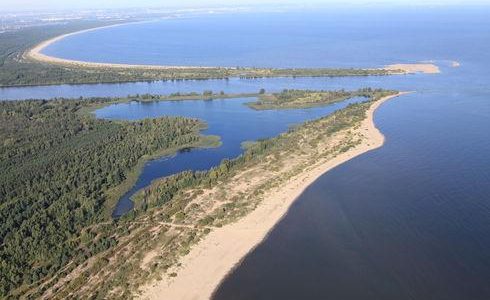It is unknown when the harbour was founded and by whom. It goes back to the times when the city itself was created and occurred so long ago that the exact dates are untraceable. Archaeological studies give only a general idea about the shape, the period of origin of various parts of the city and offer a huge potential for interpretation. It is certain, however, that the connection of the city with the harbour and maritime navigation has always been obvious and was the very reason the city was created and gained a significant position in the economic system of this region of the world.
The location of Gdańsk created its crucial advantage in competition with other commercial centres in the area. There were, however, other ports similarly located which then grew into harbour centres. The alliance of these ports and cities, called Hansa, was a supranational and supraethnic union of a political and commercial character which stretched from the Baltic to the North Sea. Gdańsk had belonged to Hansa since the middle of the 14th century. The significance of the members of the Hanseatic League grew, thanks to the transparent rules which unified the common interests of merchants, by good organisation and the ability to exercise solidarity in defence of their common interest. Even kings and emperors had to observe it. The most interesting episode of Gdańsk’s participation in the Hansa is the war it had with the English king, in which Gdańsk’s fleet participated by operating in the North Sea at the mouth of Thames. During that war Pawel Beneke, the most famous sailor from Gdańsk, on the ship called “Peter from Gdańsk” (Peter von Danzig) managed to win the “Final Judgment” by Hans Memling, the most precious piece of art which still remains in the art collections of the city.
Gdańsk’s power and glory resulting from its location and alliance with Hansa outlived the League. This was possible thanks to the city’s economic background, the huge Kingdom of Poland and then the Republic of Poland, and thanks to the great demand for agricultural and forest products in the western Europe. The connection between the demand and supply allowed Gdańsk to participate and take advantage. Gdańsk connected Poland to the rest of the world and made enormous profits from its services. The position of Gdańsk established during the 15th century as an autonomous urban republic protected by the Polish monarch, guaranteed by the king’s privileges, allowed the concentration on profitable trade in Polish crops, wood and other goods on an unprecedented scale. The profits gained here went mainly to the merchants but the whole city also profitted. The harbour located on Motława and the warehouse area on the Granary Island (Wyspa Spichrzów) generated income allowing the implementation of projects such as St. Mary’s Church, the City Hall and other objects which are now admired by tourists. The source of Gdańsk’s glory was favourably remembered by its residents and accented, among other things, by locating the fountain of Neptune, the god of the sea, on the central square, which became one of the city symbols.
The golden age of Gdańsk, as the period of the great economic and political affluence of the city was referred to, ended when the commercial tracks diverted (mainly after both Americas got involved in the worlds’ economic system) and the Republic of Poland lost its political stability. During the Prussian rule some efforts were made to modernise the structure of Gdańsk harbour, but, without the western demand and Polish products, the city had no chance of regaining its old significance and size. Between the both worldwars Gdańsk harbour witnessed the development of its strong competitor – Gdynia. During the communist regime times the largest harbour project, the Northern Harbour (Port Północny) was located in Gdańsk. The current Gdańsk harbour remains an important cargo transfer point, but its significance is nowhere near as huge as the one it had several hundred years ago.
The maritime traditions of Gdańsk, rediscovered after decades of a “diversion from the sea” of the whole city and its residents, became more and more present in its urban space. These traditions are enjoying growing interest from tourists who arrive from distant places, particularly because the layout of Gdańsk harbour allows experiencing several hundred years of its great history during one trip, including close examination of its modern equipment and projects.

















